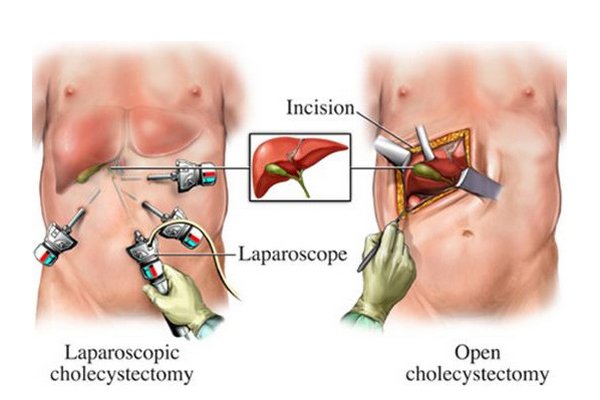Cholecystectomy
Cholecystectomy
A cholecystectomy is a surgical procedure to remove the gallbladder, a small organ located beneath your liver on the upper right side of your abdomen. The gallbladder plays a key role in digestion by storing bile, a fluid produced by the liver.
There are two main types of cholecystectomy:


Open Cholecystectomy:
This traditional approach involves making a larger incision, typically around 4 to 6 inches long, on the upper right side of your abdomen. The surgeon locates the gallbladder and removes it through this incision.
Laparoscopic Cholecystectomy:
This minimally invasive technique uses 3 to 4 small incisions. A laparoscope—a long, thin tube equipped with a tiny camera and surgical instruments—is inserted through these incisions. The surgeon operates while viewing the procedure on a TV monitor, removing the gallbladder through one of the small incisions.
Laparoscopic surgery is generally preferred because it is less invasive, leading to less bleeding and a quicker recovery compared to the open method. However, if the laparoscope reveals that the gallbladder is severely diseased or if there are other complications, the surgeon may need to switch to the open surgery method to ensure a safe removal.

